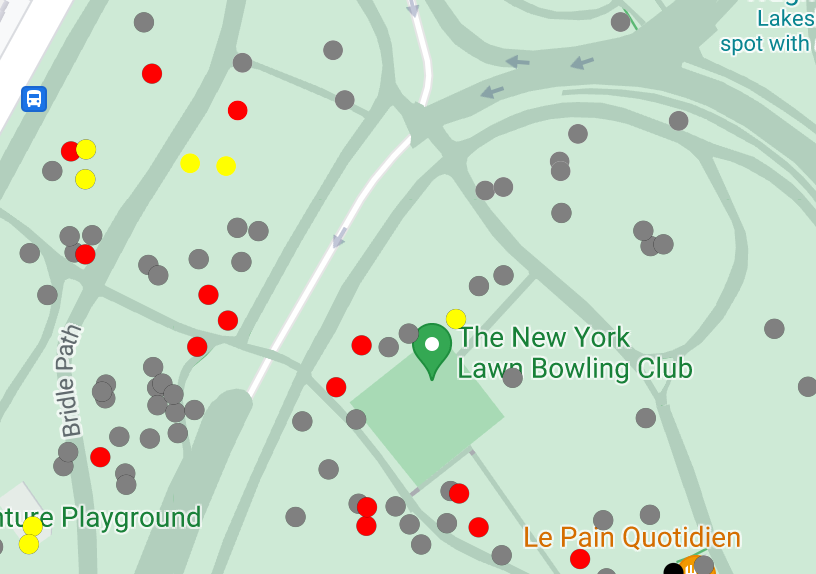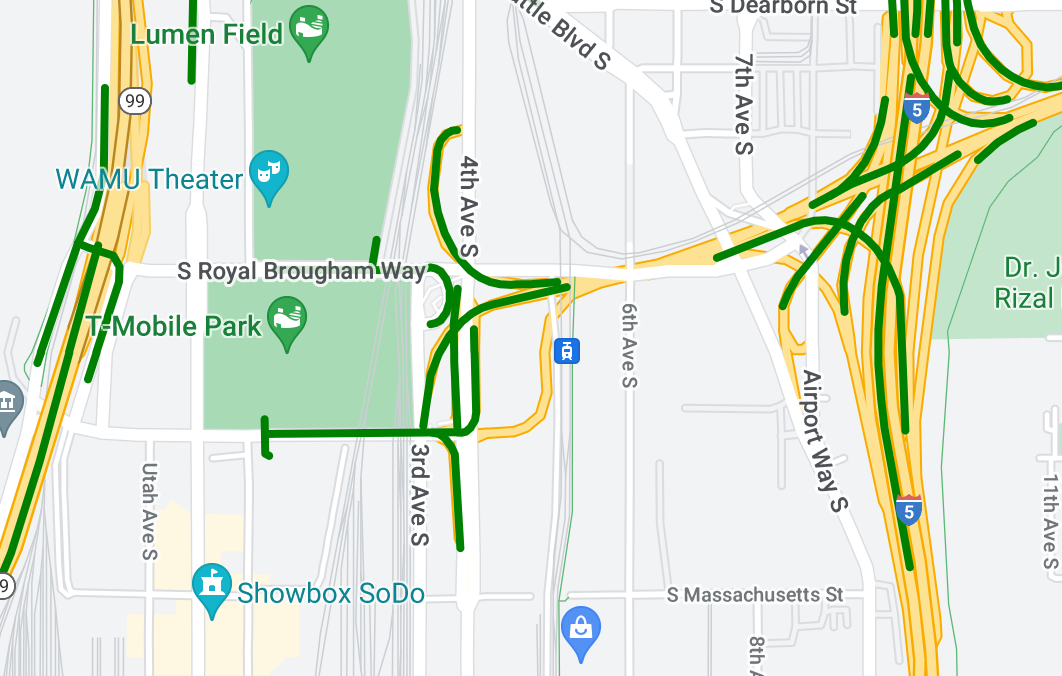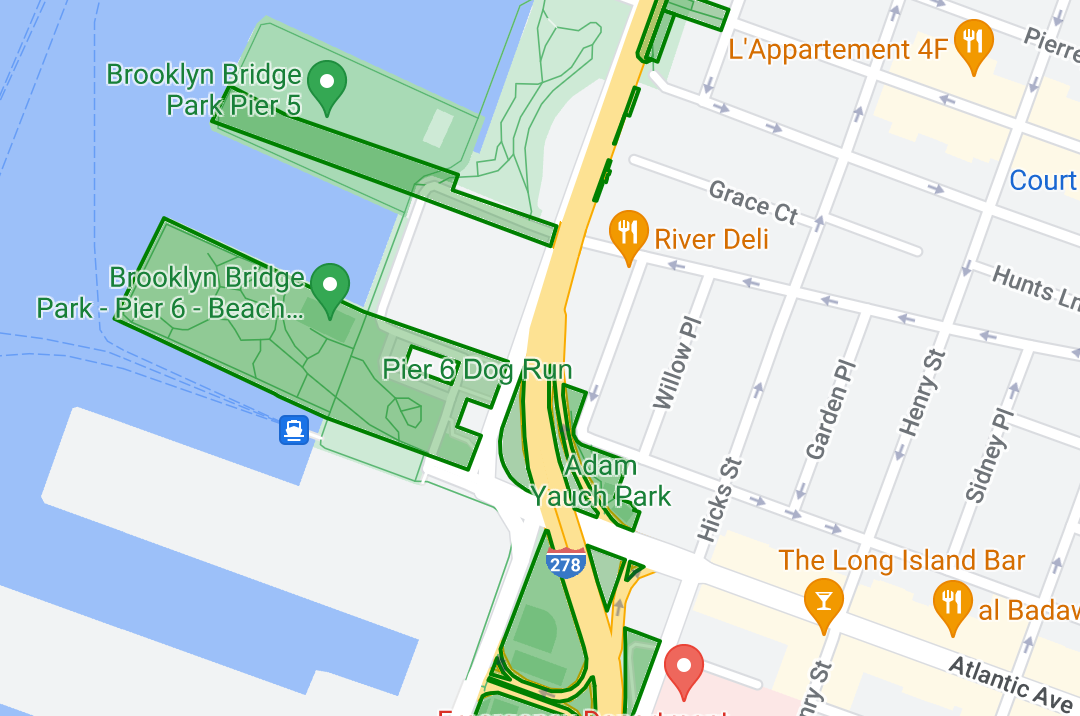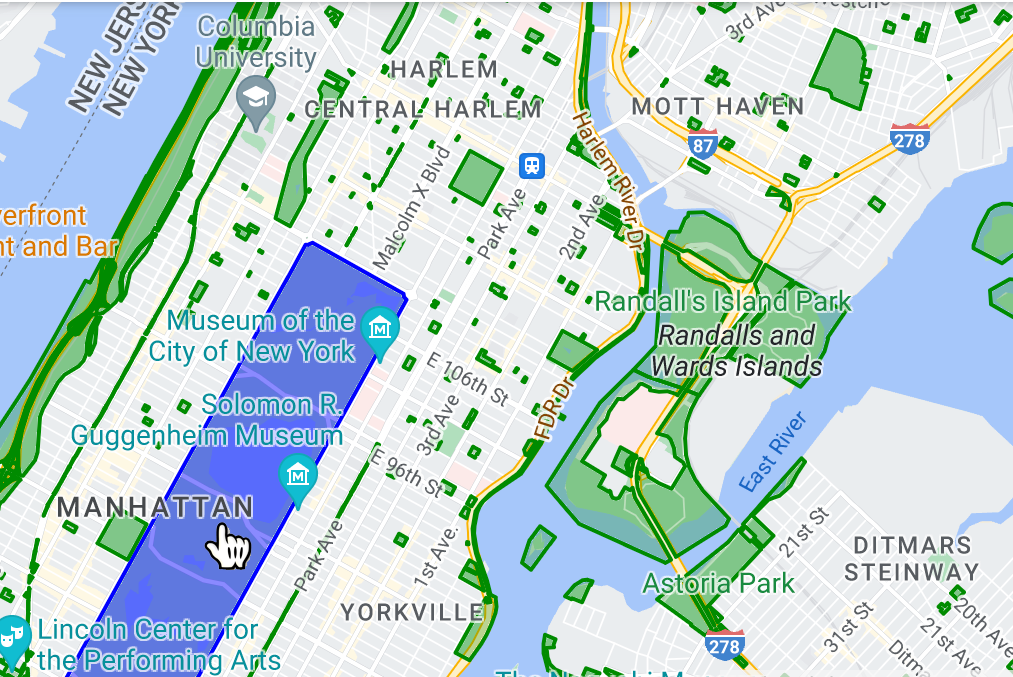تتيح لك ميزة "تنسيق مستند إلى البيانات" لمجموعات البيانات تحميل مجموعات بياناتك الجغرافية المكانية، وتطبيق تنسيق مخصّص على عناصر البيانات، وعرض عناصر البيانات هذه على الخرائط. باستخدام ميزة "تحديد الأنماط المستند إلى البيانات" لمجموعات البيانات، يمكنك إنشاء تصوّرات للبيانات استنادًا إلى أشكال هندسية على شكل نقاط وخطوط متعددة ومضلّعات، وجعل ميزات البيانات تستجيب لأحداث النقر. تتوفّر ميزة "تحديد الأنماط المستند إلى البيانات" لمجموعات البيانات على الخرائط المتّجهة فقط (يجب توفير معرّف خريطة).
بدء استخدام ميزة "تنسيق مستند إلى البيانات" لمجموعات البيانات
إضافة مجموعات بيانات جغرافية مكانية مخصّصة
أضِف بياناتك المخصّصة باستخدام Google Cloud Console أو Google Cloud Shell. تحتوي كل مجموعة بيانات على معرّف فريد يمكنك ربطه بنمط خريطة. تتوفّر تنسيقات البيانات التالية:
- GeoJSON
- قيم مفصولة بفواصل (CSV)
- KML
للحصول على تفاصيل حول متطلبات مجموعة البيانات وقيودها، يُرجى الاطّلاع على إنشاء مجموعة بيانات وإدارتها.
لمحة عن مجموعات البيانات المتاحة للجميع
لتصميم مجموعة بيانات، يجب ربط نمط خريطة بمعرّف خريطة، ما يؤدي أيضًا إلى ربط مجموعة البيانات بمعرّف الخريطة. في أحد التطبيقات، يمكن للمطوّرين الرجوع إلى معرّف الخريطة هذا، وأي نمط خريطة وبيانات جغرافية مكانية مرتبطة به. لا يتم تطبيق أي عناصر تحكّم إضافية في الوصول إلى البيانات الجغرافية المكانية، ما يجعل هذه البيانات متاحة بشكل فعّال للجميع من خلال التطبيق.
ميزات بيانات الأنماط
بعد تحميل بياناتك المخصّصة وربطها بنمط خريطة ومعرّف خريطة، يمكنك تصميم عناصر البيانات لتحقيق تأثير مرئي، وجعل العناصر تستجيب لأحداث النقر.
يمكنك تصميم بيانات النقاط لعرض مواقع جغرافية محدّدة على الخريطة.

تنسيق بيانات الخطوط المتعددة لإبراز الخصائص الجغرافية

تنسيق بيانات المضلّعات لإبراز المناطق الجغرافية

اجعل ميزات البيانات تستجيب لأحداث النقر من خلال إضافة أداة معالجة الأحداث.


